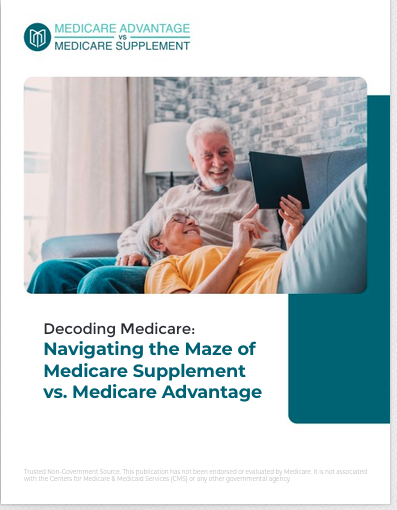Key Takeaways:
-
Adding a Medicare Supplement (Medigap) plan can help reduce out-of-pocket healthcare costs by covering expenses that Original Medicare does not pay, such as copayments, coinsurance, and deductibles.
-
The best time to enroll in a Medicare Supplement plan is during your Medigap Open Enrollment Period, which lasts six months starting the first month you have Medicare Part B and are 65 or older.
Understanding Medicare Supplement Plans and How They Work
Navigating Medicare can feel overwhelming, especially when it comes to managing out-of-pocket costs. Original Medicare (Part A and Part B) covers a lot, but it doesn’t cover everything. That’s where Medicare Supplement plans, also known as Medigap, come in. These plans help pay for expenses that Medicare doesn’t cover, including copayments, coinsurance, and deductibles.
Medigap policies are offered by private insurance companies and are designed to work alongside Original Medicare. They don’t replace Medicare but instead help fill in the coverage gaps. If you’re looking to reduce your healthcare expenses and avoid unexpected medical bills, adding a Medicare Supplement might be a smart move.
When Does It Make Sense to Add a Medicare Supplement Plan?
1. You Want More Predictable Healthcare Costs
One of the biggest benefits of a Medicare Supplement plan is financial predictability. With Original Medicare alone, your out-of-pocket costs can add up quickly, especially if you require frequent doctor visits, hospital stays, or specialized care. A Medigap plan can help limit these expenses, making your healthcare costs more manageable.
2. You Have Frequent Medical Needs
If you have ongoing health conditions that require regular doctor visits, lab tests, or treatments, a Medicare Supplement plan can help ease the burden. Since Medigap plans cover coinsurance and copayments, you’ll pay less out of pocket when receiving medical care.
3. You Travel Often Within the U.S.
Medicare Supplement plans are accepted nationwide by any provider that takes Medicare. This is a huge advantage if you travel frequently or live in multiple states throughout the year. Unlike some other Medicare options, you don’t need to worry about being out of network.
4. You’re Worried About High Hospital Costs
While Medicare Part A covers hospital stays, you’re responsible for a deductible per benefit period. If you need an extended stay or multiple hospitalizations in a year, your costs can add up fast. Some Medigap plans cover this deductible, making hospitalization far less financially stressful.
5. You Want Coverage for Skilled Nursing Facilities
Medicare covers skilled nursing facility care under Part A, but there’s a daily coinsurance cost for stays beyond 20 days. Certain Medigap plans cover this expense, which is especially helpful if you anticipate needing rehabilitation or skilled nursing care.
When Adding a Medicare Supplement Might Not Be the Right Choice
1. You Already Have a Medicare Advantage Plan
Medicare Supplement plans cannot be combined with Medicare Advantage (Part C) plans. If you’re already enrolled in a Medicare Advantage plan, adding a Medigap plan isn’t an option. Instead, you may want to review whether your current plan meets your needs.
2. You Rarely Need Medical Care
If you’re in good health and rarely visit the doctor or hospital, you might not see the immediate benefits of paying for a Medigap plan. However, it’s important to consider how your healthcare needs may change over time.
3. You Qualify for Other Coverage
Some people have additional health coverage through employer-sponsored retiree plans, Medicaid, or TRICARE. If you already have comprehensive secondary coverage, a Medicare Supplement plan may not be necessary.
Understanding Enrollment Periods for Medicare Supplement Plans
Medigap Open Enrollment Period
The best time to enroll in a Medicare Supplement plan is during your Medigap Open Enrollment Period (OEP). This six-month period begins when you are both 65 or older and enrolled in Medicare Part B. During this time, you can purchase any Medigap policy available in your state without medical underwriting.
If you miss your Open Enrollment Period, you may still be able to apply for a Medigap plan later, but you could face higher premiums or be denied coverage based on your health.
Guaranteed Issue Rights
In certain situations, you have guaranteed issue rights, meaning insurance companies must sell you a Medicare Supplement plan regardless of your health status. This applies if you lose other coverage, move out of a plan’s service area, or leave a Medicare Advantage plan under qualifying circumstances.
Comparing Medicare Supplement Plans: What to Look For
Medicare Supplement plans are standardized, meaning each plan with the same letter designation (e.g., Plan G, Plan N) offers the same benefits regardless of the insurer. The main differences between plans are in how much they cover and their monthly costs.
Common Medigap Plans:
-
Plan G: Covers nearly all Medicare out-of-pocket costs except the Part B deductible.
-
Plan N: Covers most costs but has small copayments for office and emergency visits.
-
Plan A: Offers the most basic coverage, only covering essential gaps.
Choosing the right plan depends on your healthcare needs, budget, and how much financial protection you want against unexpected medical bills.
What Medicare Supplement Plans Don’t Cover
While Medigap plans help with many out-of-pocket costs, they don’t cover everything. You’ll still need to pay for:
-
Prescription drugs (unless you have separate Medicare Part D coverage)
-
Long-term care (such as assisted living or custodial nursing home care)
-
Dental, vision, or hearing services (unless covered under another plan)
-
Private-duty nursing or personal care services
For services not covered by Medigap, you may need to explore additional insurance options or set aside savings to cover potential expenses.
Making the Right Choice for Your Healthcare Needs
Adding a Medicare Supplement plan can provide valuable peace of mind, especially if you anticipate frequent medical care or high healthcare expenses. However, it’s essential to evaluate your personal healthcare needs, budget, and other available coverage before making a decision.
If you’re approaching 65 or newly enrolled in Medicare Part B, now is the time to explore your Medigap options. Doing so during your Open Enrollment Period ensures you have access to the best coverage without medical underwriting restrictions.









